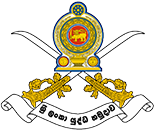FOR YEARS, pro-Tamil demonstrators have proudly hoisted the distinctive red flag many associate with the banned Tamil Tigers, a group Canada deems a terrorist organisation.
But on Tuesday, among about 10,000 demonstrators on Parliament Hill, those were nowhere to be seen, replaced instead by Canadian flags and stark black banners - symbolic, demonstrators said, of the civilians killed in the offensive by the Sri Lankan government.
The change underscores the power of a terrorist designation, which has kept some members of Parliament away from pro-Tamil protests for fear of being photographed with the distinctive red flag, but also its inability to make subtle symbolic distinctions.
"The majority of people have made a collective decision to hold their flags in their hearts and minds, and not display them publicly," said Sentha Nada, a demonstrator from Toronto.
In vexillology, the study of flags and their meaning, the left-most one-seventh of the flag of the Democratic Socialist Republic of Sri Lanka is coloured green, in rough proportion with the country's minority Muslim population, with another saffron seventh for Hindu Tamils.
The remainder is red, with a golden lion passant (facing left, with right paw raised) holding a sword - a design based on the standard of the kings of Kandy, the seat of the majority Buddhist Sinhalese royalty.
The slightly awkward arrangement is a compromise. For a brief two years, beginning with Sri Lankan independence at 7:30 a.m. on February 4, 1948, the lion was all alone on the flag, until the additions were made for fairness.
That compromise was proved a failure in 1990 when, in the midst of the continuing civil war, Tamil leadership adopted the red flag of the Tamil Tigers, stripping it of the inscription of the Tigers; formal name: the Liberation Tigers of Tamil Eelam.
The Tiger flag -- a militaristic image of a jumping tiger with crossed rifles -- was created by Tiger leader Velupillai Prabhakaran in 1977, shortly after LTTE was founded, but before it had risen to unrivalled authority as the Tamil insurgent force. In 1990, it was his decree that made the amended flag the Tamil national flag, a distinction that enjoys wide support in the Tamil diaspora, which has deep roots in Canada.
The image derives from the heraldry of the Chola Kingdom, named for its "cholas" or rulers, one of three great divisions of southern India dating to as early as 250 BC.
The tiger on its banners is mentioned by Greek writers, as is the long-standing conflict with the Sinhalese, and the era's poetry uses the tiger as an image of nobility.
In a guide book he issued to explain the flag of the separatist nation under his brutal military command, Prabhakaran described the yellow as signifying Tamils' aspiration to self-governance; the red as revolution according to egalitarianism; black as the "dangers, death and destruction" of the civil war, and white as "purity, honesty and selflessness." (Courtesy: The Island)

